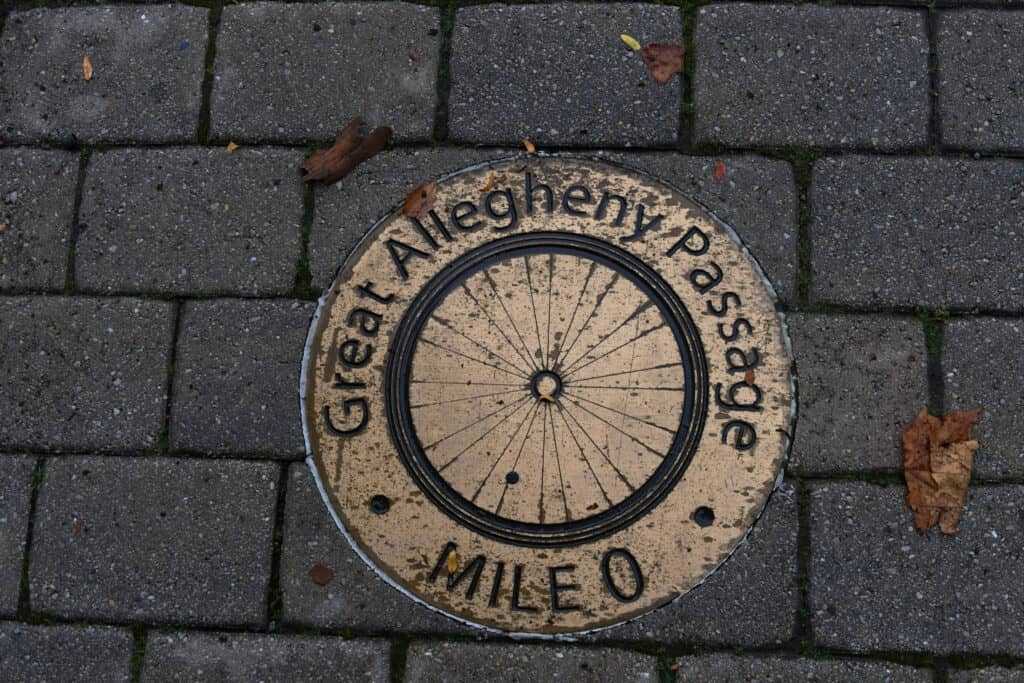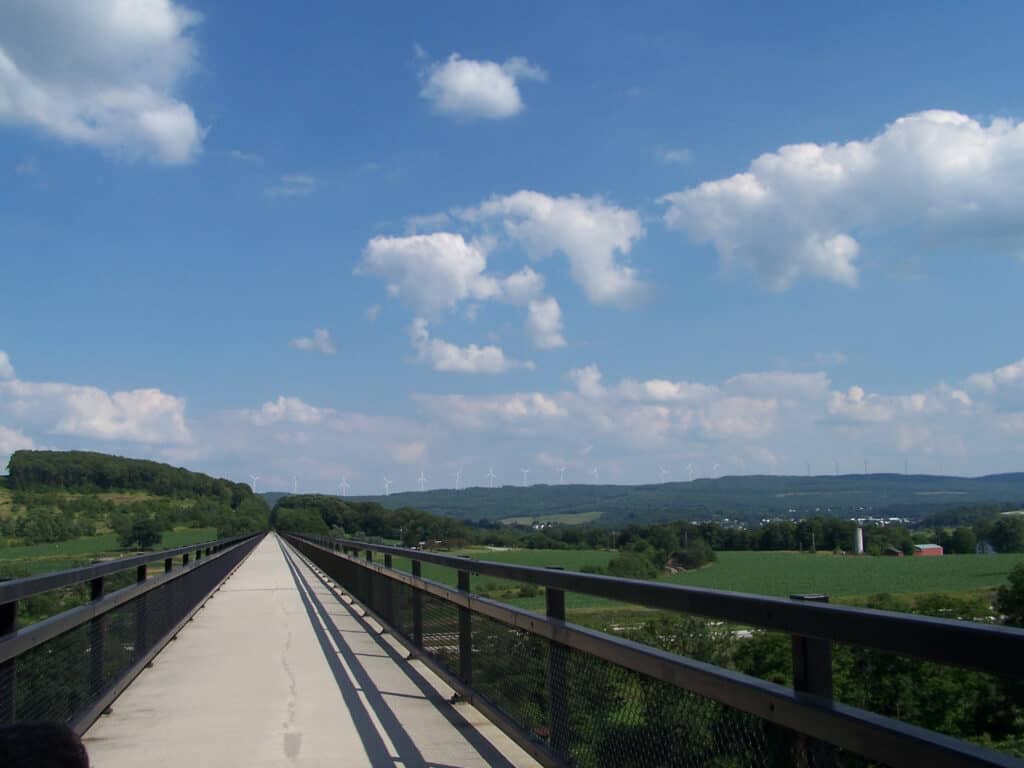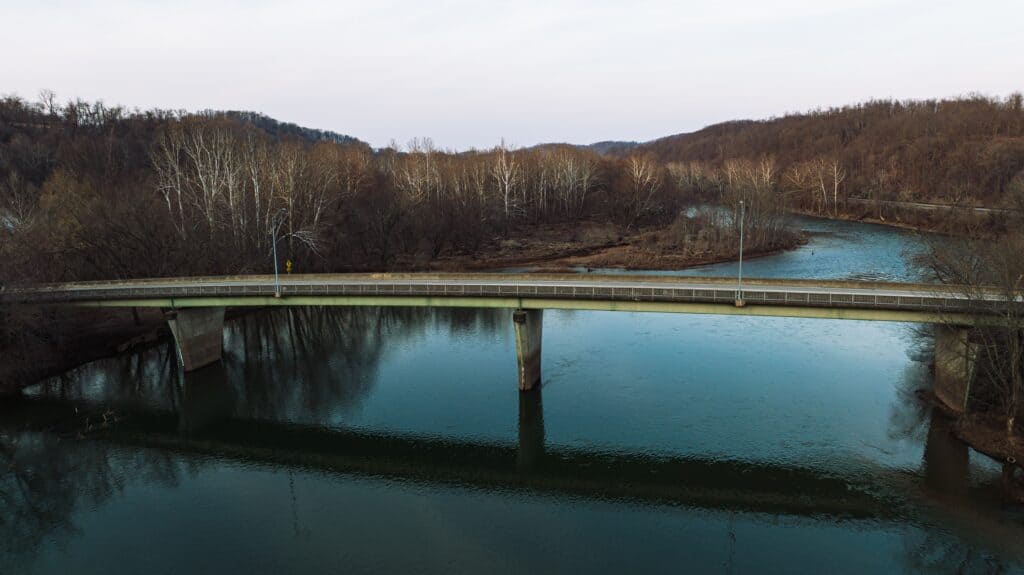If you want to discover Maryland on your bike, this is not a bad idea. Maryland is one of the most bike-friendly states in the country, coming in at #14 on the list of rankings set forth by the League of American Bicyclists.
Maryland is a great state to bike in, although it can be challenging to some, with all of the peaks and valleys. However, there are many great trails for you to choose from if you want to go biking in this wonderful state.
You might be wondering now, what is the longest biking trail in Maryland? Keep reading, and you will find out!
The Longest Biking Trail in Maryland

Steve Guldeman/Shutterstock.com
The longest biking trail in Maryland is the Great Allegheny Passage. This trail starts in Cumberland, Maryland, and ends in Downtown Pittsburgh, Pennsylvania. This is a 150-mile path that does not carry motorized vehicles. On this path, you can ride alongside the Youghiogheny River, Casselman River, and Monongahela River.
This trail also allows you to go over valleys and around mountains. If you ride along the entire trail, you will cross the Mason and Dixon line, go through multiple state parks, experience several trail towns, and much more.
The Great Allegheny Passage Route
Generally, this route follows old railbeds between Cumberland and Pittsburgh. Mile marker 0 is located at Cumberland. From here, cyclists will face a challenge in the next 23.7 miles. It is a very steep uphill ride to the Eastern Continental Divide, which is the peak of the trail.
If you continue to travel east, you will find that the grade is slight but consistent all the way to Pittsburgh.
Along this route, there are many historical sites that can teach you a great deal about Western exploration and even the French and Indian War.
If you traverse the entire length of this trail, you will go through Allegany, Allegheny, Fayette, Somerset, and Westmoreland counties.
Planning for a Tour of the Great Allegheny Passage

Raun Kercher/Shutterstock.com
You should make sure that you have a bike that is able to handle all kinds of terrain. You are going to be riding on top of not only asphalt and concrete but also gravel, crushed limestone, and in some areas, dirt.
If you’re wondering what you should bring with you, you might want to forego bringing anything. After all, the trail is very long, and you don’t want anything weighing you down during an already challenging ride.
There are plenty of towns along the course of this trail. This means that if you forgot something, you’d usually be able to find it somewhere. In fact, you will never be more than nine miles from one of the towns on the trail.
You should also keep in mind that you might not always have cell phone coverage. While coverage is improving, there may be instances where you find yourself without service. This can be problematic if you end up getting lost and have only a digital copy of the map on your phone, for example. You should take advantage of your stops in town to charge your phone.
As it is such a long trail, it’s unlikely that most people will be able to finish it in one day. That’s why it’s a good thing that there are many options for accommodations along the length of the trail.
Navigating the Route of the Great Allegheny Passage
There are signs all along the route which will help guide you in the right direction if you ever find yourself getting lost. There are also frequent stops in towns, and you can always ask the locals for directions if this becomes necessary.
Additionally, there are maps available online. It would be a good idea to familiarize yourself with this map as much as you can before leaving. This way, in case you lose cell phone reception while you are on your bike, you will at least have some idea of where you need to go.
The Great Allegheny Passage Difficulty

Wirestock Creators/Shutterstock.com
This trail might be difficult for novice bikers. First of all, although some parts of it are paved with asphalt and concrete, others are not. On these parts, you will have to ride on top of crushed stone, gravel, and dirt. This can be a challenge, especially during inclement weather. When it rains, dirt can turn into mud, which can make for a tricky ride.
In addition, the natural landscape of Maryland makes this a relatively difficult trail compared to some others. You are not going to be riding on flat terrain. The 23.7 miles between the very beginning and the Eastern Continental Divide will be very challenging for people who do not like to ride uphill.
Wildlife on the Great Allegheny Passage
Some people might worry about bears while they are biking along this trail. However, bears are of minimal concern on the Great Allegheny Passage. More likely to be a nuisance are raccoons, squirrels, and mice in forested areas. These animals might steal your food.
However, you are very likely to see plenty of native animals of Maryland while you are on the trail. It’s a very long trail, and there’s a lot of native fauna in this area. There are more than 400 species of birds, hundreds of species of fishes, 90 species of mammals, and much more.
As you are riding your bike along the path, you are likely to see many birds. These include the wild turkey, black vulture, red-tailed hawk, and more. If you go through forested areas, you are also likely to see opossums and shrews. There are many moles, bats, rabbits, and squirrels in Maryland as well. You might even see a beaver setting up a dam if you go close to a river.
If you go fishing, you are likely to see a huge set of fish species. You will also encounter reptiles and amphibians. There are many types of turtles, snakes, lizards, salamanders, frogs, and toads on the banks of bodies of water in the state of Maryland.
Up Next:
The post The Longest Biking Trail in Maryland appeared first on AZ Animals.
from Animal News, Facts, Rankings, and More! - AZ Animals https://ift.tt/PrICG4Q